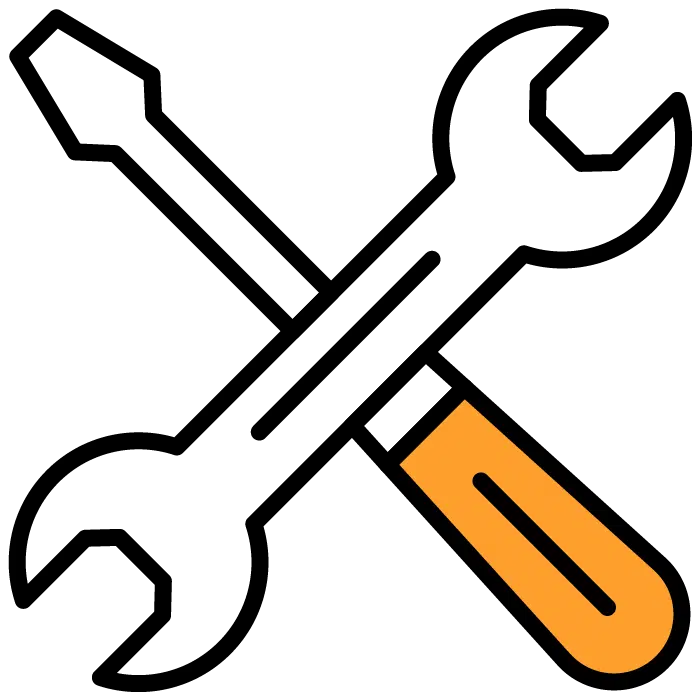Achieving long-term success in hiring requires striking a balance between speed and quality, ensuring the right fit for both the candidate and the organization while avoiding the pitfalls of rushed decisions or unfilled positions.
As you know, hiring is a delicate balance between speed and vetting candidates to ensure they can fulfill the obligations of the role. We interviewed five experts in the field of HR and business to get an idea of how people are walking the hiring tightrope between speed and high-quality hires.
While hiring too quickly can result in a poor cultural fit and increased turnover, leaving a role unfilled for too long can put strain on your current team, resulting in burnout and disengagement. So, how do we strike the ideal balance?
The general consensus is to focus on hiring for retention, ensuring a thorough understanding of the role, and evaluating candidates through structured, behavioral-based interviews. Assessing previous experiences and involving multiple stakeholders in the interview process can also help prevent a bad hire from falling through the cracks.
Let’s dive in and see what our experts had to say. You might find some quality gems to take back to your organization. F

Q: What’s the biggest drawback of hiring too fast?
When you’re ready to add new team members, it can feel like a sprint to the onboarding finish line, but hiring too fast can pose some serious issues worth considering.
Too Fast = Too Wrong
Jody Ordioni, Chief Brand Officer at Brandemix:
Hiring too fast may mean hiring too wrong. If you haven’t built and vetted an authentic employer brand, you may be hiring people who won’t be a good fit for your culture or role.
Lack of Confidence
Terina Matthews-Davis, Director of the Americas at AMS:
The biggest danger of hiring quickly lies in not getting the right talent in the seats. Then you’ll have to go through performance management and exit that talent from the organization, thus causing lack of confidence in your TA hiring team with the business.
Turnover
Tracey Parsons, Co-Founder and CEO of Worqdrive:
If you’re hiring too quickly, you may risk low quality of hire, mismatch, and ultimately turnover. When hiring is rushed, neither party takes the time to learn what they need to learn about each other.
Potential Regret
Michele McGovern, Witer, HRmorning:
The biggest issue with hiring fast? Getting it wrong. It’s like taking a whirlwind romance to a Vegas wedding chapel. Hiring managers and candidates make commitments too early in the relationship — and regret it when they realize it’s not a good fit. Divorce in one situation. Turnover in the other.
Missing Out on Relevant Talent
Efrat Dagan, CEO of WorkAround:
The biggest drawback of hiring too fast is not taking the time to define the recruiting task well. This can cause many difficulties such as loss of time and effort, hiring mistakes, misaligned expectations, and missing out on relevant talent.

Q: What’s the biggest drawback of leaving a role unfilled?
It’s natural to want to wait for the perfect candidate for your organization, but leaving roles unfilled can have larger consequences for your existing team’s satisfaction, productivity, and goal achievement.
More Pressure on Current Staff
Jody Ordioni, Chief Brand Officer at Brandemix:
The biggest drawback of not hiring quickly enough could be putting more pressure on the people in the workplace to compensate for the work not being done. And while in certain industries this could be less significant, imagine if you didn’t have enough nurses to take care of all the sick patients.
Burnout
Terina Matthews-Davis, Director of the Americas at AMS:
If you leave roles unfilled, you risk lack of work/life balance for the current team, causing burnout and potential organization flight risks.
Productivity Vacuum
Tracey Parsons, Co-Founder and CEO of Worqdrive:
When a role stays vacant, there’s a vacuum of productivity, a drain on culture, and a burden on the team. Unfilled roles cause more turnover, reduced productivity, and in some cases unfilled orders.
Negatively Impact Culture
Michele McGovern, Witer, HRmorning:
You can create deeper divides by hiring too slowly. Employees who pick up the slack will become resentful — toward their boss and the organization — for the extra work and stress. They’ll become disengaged, negatively affecting culture.
Missing Business Goals
Efrat Dagan, CEO of WorkAround:
The biggest drawback of leaving a role unfilled may be the inability to deliver on business goals, lost revenue, and loss of future or existing talent if other employees are dependent on this future position.

Q: What’s the upside of hiring slower and better, even if it means leaving a role unfilled?
Finding the ideal candidate takes time — but it can be well worth the wait. If you want to prioritize employee retention and reduce turnover, focus on securing the right person for the job.
Longevity
Jody Ordioni, Chief Brand Officer at Brandemix:
The upside to hiring slower and better is that you’re recruiting for retention, and rather than getting into a cycle of re-hiring to compensate for turnover, you’re hiring people who you know will stay, perform, and recommend others.
Confidence
Terina Matthews-Davis, Director of the Americas at AMS:
Slowing down a little means securing the right talent for the role. This will instill business confidence in the TA team.
Be Proactive and Don’t Wait
Tracey Parsons, Co-Founder and CEO of Worqdrive:
I would not advocate for hiring slower right now. We need to speed up the time to fill. That doesn’t mean we skip steps. What it means is that we build proactive strategies and relationships with people who want to work with us.
Lower Turnover
Michele McGovern, Writer, HRmorning:
If you hire slower, you get it right. As a crime reporter, I spent months on investigations to get the story right. Similarly, hiring slower and better means taking the time to get to know the candidate and ensuring they’ll be a valuable addition to the team. This leads to lower turnover, higher engagement, and a better overall work environment.
Higher Quality
Efrat Dagan, CEO of WorkAround:
The upside of hiring slower and better is a higher quality of hires, which leads to better productivity, higher retention rates, and overall stronger teams. It also allows you to build a more diverse workforce and ensure better alignment between the candidate and the role.

Q: What are the top two things we can do to make sure a bad hire doesn’t slip through?
No one wants to select a candidate that turns out to be a bad fit for the team. Finding the right hire starts with educating and empowering your hiring managers and TA teams.
Pool of Candidates and Manage Expectations
Jody Ordioni, Chief Brand Officer at Brandemix:
To avoid making bad hires, provide hiring managers with enough great candidates that the chances of hiring a poor choice is negligible. The second thing is to make sure that candidates are giving a realistic picture of the role and expectations, and making sure they have demonstrated experience to support your decision.
Make Sure Everyone Is Aligned
Terina Matthews-Davis, Director of the Americas at AMS:
If you’d like to ensure you don’t make a bad hire, then make sure TA understands the role they’re filling. Ensure that the hiring manager is on the journey in the selection/interview process.
Know the Role and Meet Criteria
Tracey Parsons, Co-Founder and CEO of Worqdrive:
To avoid bad hires, one, know what you’re hiring for. Two, ensure the candidate meets the criteria. We need to be specific about what we want and don’t want, then use selection tools to screen for those factors.
Define Job and Structure the Interview
Michele McGovern, Witer, HRmorning:
The first step in preventing bad hires from slipping through your hiring process is to create a well-defined job description that outlines the skills, experience, and culture fit necessary for success. Second, use consistent, structured interviews with a focus on behavioral-based questions to predict future performance.
Define the Role and Maintain Structure
Efrat Dagan, CEO of WorkAround:
The top two things we can do to keep bad hires from getting through are: 1) Clearly define the role, its responsibilities, and required skills and experience, and 2) Have a structured and thorough interview process with multiple stakeholders involved to ensure a comprehensive assessment of the candidate.

Q: What’s your best technique to assess a candidate during the interview process?
Hiring experts stress that successful candidate assessment requires balancing relevant interview questions, performance reviews, and reference checks. The most well-rounded candidates bring more to the table than an impressive resume.
Behavioral Questions
Jody Ordioni, Chief Brand Officer at Brandemix:
When I assess a candidate, I use behavioral interviewing questions to make sure they have the opportunity to talk more about the situations and experiences they’ve been successful in, and glean out the things that would make them a poor choice for the company culture.
Reference Checks
Terina Matthews-Davis, Director of the Americas at AMS:
One of the best assessment steps I use with candidates is to explore past experiences. Past performance is a key indicator of future performance. Behavioral based interviewing is also key, as are detailed reference checks.
Look at Past Performance
Tracey Parsons, Co-Founder and CEO of Worqdrive:
I am a fan of behavioral-based interviews. I believe if someone has done it before, they can do it again. Past performance is the best predictor of future performance.
Open-ended Questions
Michele McGovern, Witer, HRmorning:
When you’re interviewing candidates, ask open-ended questions that elicit stories about past experiences. You want to hear about the obstacles they faced, how they overcame them, what they learned, and how they might apply those lessons to your organization.
Focus on the Interview Process
Efrat Dagan, CEO of WorkAround:
My best technique to assess a candidate during the interview process is to use a combination of behavioral, situational, and skill-based questions. This provides a holistic view of the candidate’s abilities, experience, and potential fit within the organization.
Summary
At the end of the day, hiring is all about keeping a balance between hire fast vs hire better. While filling a role quickly can alleviate immediate pressure on the team, the potential drawbacks of a bad hire may outweigh the benefits.
Taking the time to the role you’re filling and to thoroughly assess candidates using behavioral interviews are critical steps in ensuring a good hire. Just keep in mind that if you leave a role unfilled for too long, you could start to create stress and burnout among existing employees.
It’s important to strike the right balance between speed and quality during the hiring process. You don’t want to hire from a place of scarcity, which is an easy trap to fall into. Stick to a process that works for your organization.
Remember, the ultimate goal is to create a strong, cohesive, and productive team. It’s not about checking off items on your to-do list. Taking the time to find the right fit for both the candidate and the organization will lead to long-term success and a healthier work environment.













